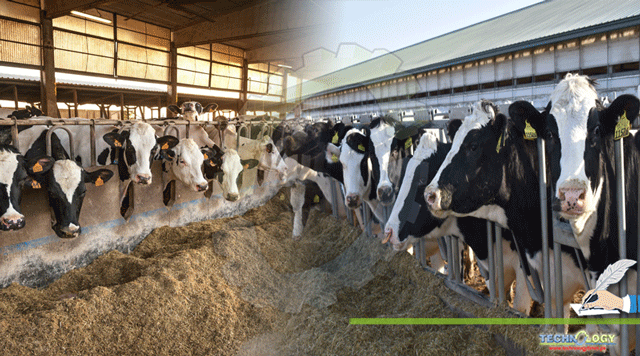Developing countries like Pakistan, mainly depends on agriculture sector and livestock is a major part plays a vital role in agriculture. In Pakistan, more than 70% of the population lives in rural areas and the majority depends up on livestock for their subsistence.

By Mahvish Rajput,Dr. Muhammad Sohail Sajid
Globally demand of animal origin food is increasing day by day therefore livestock sector is need to expand (FAO, 2009). Quality and quantity of feed is directly proportional to climatic extremes and seasonal fluctuations and definitely it will cause decline in the production and reproduction efficiencies of livestock. Extreme weather is a major cause due to which livestock production is adversely affected and there is decrease in major livestock productions.
Livestock sector is different and more complex than agriculture sector in responding to climate change. In some studies, warming showed beneficial impacts due to less exposure to diseases in warm climate. However, there are certain ranges of drivers that add uncertainty in gagging the likely impacts of climate change on the biophysical characteristics of dairy systems. Firstly, there is a debate over the vagueness around the anticipated climate changes. Most of the consequences of a warming climate are erratic and depend on multifaceted response cycles that on the other hand are also poorly understood. Secondly, specific aspects of climate change may be pertinent to dissimilar aspects of the system, e.g. humidity and heat are key concerns in cattle welfare. However, if rainfall increases, it can have potentially negative impact on cattle welfare including reproduction and production aspects due to an increase in parasite-induced abortions. These kinds of system complexities and uncertainties, overlapped with the vagueness inherent in the socio-economic domains results in risk of maladaptation, which in many cases increase the vulnerability to climate change in the longer run. From dairy systems perspective, examples of maladaptation might include the actions that increase the dependence on fossil-fuel centered and water intensive solutions. These in turn are likely to lessen the overall resilience of the industry from energy and water stress factors, and lead to amplified greenhouse gas emissions from the farming systems. Due consideration is required in evaluating potential adaptation options as it is significant to consider complexities and 19 uncertainties from a whole systems perspective. Global warming, the major component of climate change, may have
strong effect on the production time of the animals reared in farm worldwide. Among various environmental parameters, heat stress appears to be one of the stimulating variables posing challenge to farm animal production in many geographical locations round the globe. Livestock production mainly effected directly or indirectly with the climate change impacts.
Direct effects of climate change on livestock:
Heat stress is a major cause for the most devastating direct effect of climate change on livestock production. Animal productions such as milk, meat and reproductive efficiency may be decreased and livestock producers can face highly significant financial losses due to heat stress. Therefore animal performances could directly effect with increase in air temperature, which is predicted by various climate change models.
Indirect effects of climate change on livestock:
Climatic change conditions not only effect directly but also indirectly to livestock production mostly through decrease or non- availability of water and feed resources. Quantity and quality of forage, reliability of forage production, and cultivation of forage along with large-scale range land vegetation patterns all are effected by climatic change conditions. Climate change impacts and harmful affect of climatic change conditions on species composition, quality and productivity of forage may cause serious damages to animal productions. Forage production will be impacted due to the wide fluctuated rainfall distribution in flourishing season in through out the world. Water quality, demand and availability are also influenced with the climatic change conditions. Modification in weather and temperature conditions interrupt the quantity, quality and arrangement of rainfall, river flow and groundwater. Higher intensity of precipitation
also noticed in climate change conditions and it will tend less groundwater recharge. Because of climate change longer dry periods can occur and there will be reduction in water supply resources for agriculture, livestock and human beings too. Lack of availability of water can affects animal physiological homeostasis and animal body weight and reproduction abilities can be reduce and animal will more prone to various diseases. Along with vector borne diseases are emerging day by day in result of various climate change conditions also causes of severe economic losses.
Therefore to understand the possible responses of farm animals towards various environmental factors in changing climate scenario theoretical and practical efforts have been diverted globally to develop novel knowledge bank. However managing farm animals against climate change is still a difficult task if global consensus to cooperate with each other is a missing link.